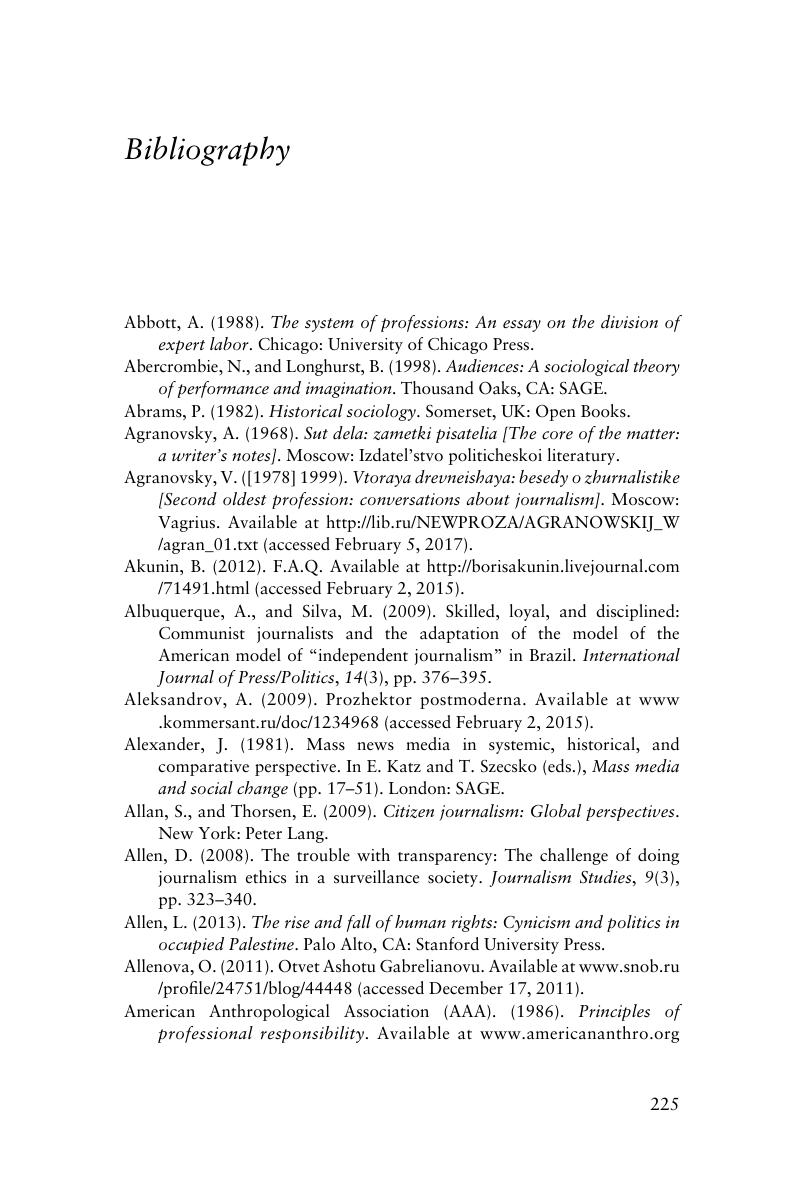Book contents
- Losing Pravda
- Losing Pravda
- Copyright page
- Dedication
- Contents
- Acknowledgments
- Introduction
- 1 Ethics and Politics in Soviet Journalism
- 2 Journalism and Capitalism
- 3 From the Fourth Estate to the Second Oldest Profession
- 4 The Spiral of Cynicism in the 2000s
- 5 Trying a Life without Irony in the Early 2010s
- Conclusion
- Bibliography
- Index
- References
Bibliography
Published online by Cambridge University Press: 22 September 2017
- Losing Pravda
- Losing Pravda
- Copyright page
- Dedication
- Contents
- Acknowledgments
- Introduction
- 1 Ethics and Politics in Soviet Journalism
- 2 Journalism and Capitalism
- 3 From the Fourth Estate to the Second Oldest Profession
- 4 The Spiral of Cynicism in the 2000s
- 5 Trying a Life without Irony in the Early 2010s
- Conclusion
- Bibliography
- Index
- References
Summary

- Type
- Chapter
- Information
- Losing PravdaEthics and The Press in Post-Truth Russia, pp. 225 - 258Publisher: Cambridge University PressPrint publication year: 2017

